All photographs are my own and can not be copied or used without permission.
These currently posted images are mainly from the Kenema Area in the Eastern Province of Sierra Leone where we lived. Many are of my Dama Road neighbors, and of our students at the Holy Rosary Secondary School and at the Kenema Teacher's Training College. There are many also from area villages such as Vaama, or Tokpombu, or Bitema, or Gbenderoo, or Foindu. These villages all with less than 100 people in them, all are in the Nongowa Chiefdom in the Kenema District of the Eastern Province of Sierra Leone. All were in walking distance ( 6 miles) of our home. I was lucky to have friends while I lived in Kenema who were willing to show me their villages and teach me about their ways. Kenema was a big town even in those days. Susan and I lived on the HRSS school compound. To this day I appreciate the warmth and friendship of my many friends including Siaka Kpaka, Patrick Garlough, Mama Hokey, the Garlough family (Pa Garlough and his wife Sabina), schoolboys Senesi Edward Lahai, Momo Vandi, and Mansaray Vandi, Mrs. Porter (and her son Bankole), Pa Sam of Vaama (and his wife Massa), and also of our many students both at Kenema Holy Rosary Secondary School (HRSS) and at the Kenema Teacher's Training College. One of our mentors while there was a woman named Mama Hokey Kemoh. She lived across from us at #55 Dama Road. In those days she was the area leader of the Bondo Society (Sowei). She was a regal woman who befriended us, joked with us, and taught us about what it was like to be a Mende woman. Many a night was spent on her veranda listening to a woman named Bonya lead beautiful Mende songs, while other women responded with incredibly beautiful harmony. Some nights this would be to a full moon, and other nights there would be rain beating down on the metal roof. It was Mama Hokey who would send for us and allow us to be there and listen, because she knew how very much I loved the wonderful songs and the very haunting harmonies. In many respects Mama Hokey was a surrogate parent to us while we lived there. In those days I smoked a pipe and thus she nicknamed me "Shmoku Pipee." Mama Hokey also nicknamed a young child living in her household as Hokey "Kpokpoi" - and called her my sister. My sense was that the word kpokpoi (?sp) meant chin in Mende and that Mama Hokey felt that this young girl with the prominent chin looked like me. I am aware as of 2008 that Mama Hokey is still alive, living back in her village of Foindu (Nongowa), but is blind.
There are also many pictures from other parts of the country including my two trips to the Loma Mountains and Bintimani, with many photos from the Kuranko village of Sokurella (?sp) at the base of Bintimani. I made two difficult treks to this area in March 1969 and again in March 1970 to hike in the Loma Mountain range - the highest mountains in West Africa outside of Mt. Cameroon.
In the period 1968 - 70 in Sierra Leone there was some unrest between the two major political parties the SLPP and the APC. We certainly were aware of the issues. However in the last two decades Sierra Leone had a very long, horrendous and very tragic war in which horrific abuses were perpertrated such as the use of child soldiers, mutilations, rape as a politcal policy, this all in a ten years downslide for which, even with the tremendous resilience of its people, may take generations to recover. Sierra Leoneans are indeed a resilient people. They will succeed in rebuilding this once proud and wonderful country. However a generation has been without regular education, has been disrupted by the depravity of the horrible war, and has been dispersed to other parts of the world.
In way of explanation the word BONDO refers to the women's secret society in the area, a society that trained young female initiates to be responsible women in the society. The comprable men's society in our area (Mende) was the PORO society. BINTIMANI is a mountain in the Northern Province of Sierra Leone in the mountain range known as the Loma Mountains. In March of 1969 and again in 1970 I hiked in these mountains and stayed in the remote village of Sokurella at the base of Mt. Bintimani. Bintimani is the highest mountain in West Africa outside of Mt. Cameroon. KENEMA was the town where we lived while in the Peace Corps. HRSS refers to the Holy Rosary Secondary School, the school that we were assigned to and where Susan taught English and history, and where I taught math and science, and was assigned to be the netball coach. TTC refers to the teacher's training college in Kenema that we also taught at. I suspect that many of our students are now important leaders in the Sierra Leone community. Then there are the many spirits (called Devils) such as the black raffia BONDO Devil, symbolizing the women's Bondu Society, GOBOI (Mende) and somewhat wild and frenzied secular men's devil, JOBAI (Mende) - also a men's secular devil. I ask any of my Mende friends to excuse any misspellings. I welcome any corrections since it has been 40 years since I have walked in Mendeline. MENDE refers to one of the major ethnic groups in Sierra Leone. We lived in their area. KURANKO refers to a small ethnic group that lived around the Loma Mountains - the village of Sokurella was a Kuranko village. LIMBA is another ethnic group found in Sierra Leone. DAMA ROAD was the road that we lived on and where many of our neighbors and friends lived (this was in Kenema and was a road that headed to Dama Chiefdom). NONGOWA refers to the chiefdom where we lived and where Kenema was the capital.
Lastly let me thank the Sisters of the Holy Rosary who chose us to be part of the first faculty of the Kenema Holy Rosary Secondary School in 1968, and who tolerated having a non-Catholic man teaching on the compound during our two memorable years there. My most memorable teacher colleague among the Sisters was Sister Adrian (Kathleen Toland) who had been in Nigeria before coming to Sierra Leone. Also Sister Mary Ibar (now Sister Celia Doyle) who came in our second year and taught math and science (at least this is what I remember). Both these women were truly dedicated to their teaching and to the students that they taught. Both seemed to have their purpose in perspective and understood that change was in the wind in the 1960's and that Sierra Leone was emerging from its colonial past as it adjusted to Independence. These two dedicated women were able to be flexible and see in their African young women both hope and promise. These were two very Holy women in the best sense of this term.
Sunday, April 1, 2012
Tuesday, November 25, 2008
Allieu B. Massaquoi
As noted before Susan and I left for Africa in July of 1968 and by September of 1968 we both were busy with teaching at the Holy Rosary Secondary School in Kenema. Although I became netball coach at the school (and at the Teacher's Training College) I had always been interested and Track & Field (they called it Athletics). It was after the Mexico City Olympics that I was made aware of a young Kenema runner named Allieu Massaquoi. I had been told that he had competed in Mexico City in the 10,000 meters and also in the marathon. He was young - and was a student at the Kenema Secondary School (KSS) - a public school on the other side of Kenema from where we lived. I suspect that for the most part in those days he was self-trained although he may have had a coach in Kenema. He was a local legend. I was told that he could run forever and that there was no one who could beat him locally. I also learned that he came from Kenema, that his father, B.S. Massaquoi was a modern, and well-to-do Minister of Parliament from our area. I think I was also made aware that he was a good student. I did see him run once in Kenema and soon contacted him. We met at his father's home on the other side of Kenema. It was a comfortable, cinder block home in a nice Kenema neighborhood. He was very interested when I mentioned to him that I had contacts in Boston at the University level. After our meeting, in which I also met his father, I wrote the Boston University track coach, Billy Smith and told him about Allieu. Coach Smith had been aware of Allieu from his Mexico City involvement and wrote back that he would contact Allieu. Allieu ended up applying to Boston University and getting accepted and by the Fall of 1969 was a member of the freshman class there. He also became a member of the track team where he ran the long distances and cross country. It was an article in the Boston Globe, in which I was mentioned as having made the contacts to get Allieu to BU that caught my mother's eye one day. My mother had never read the sports page much but it was this article featuring Allieu that somehow caught her eye. And when it mentioned me, she immediately went to the phone, contacted Allieu, and invited him to dinner. Soon Allieu and my mother became close friends as my mother oversaw that he was warmly dressed for the upcoming winter, that he was well-fed, and that he had "family" while living so far away. And of course she wrote to me expressing disappointment that I hadn't told her of his coming to Boston. From giving him winter clothes, to inviting him for suppers - my mother became Allieu's home away from home. Allieu, ever the gentleman, put up with my mother's questions about his country, about me, and about his life in the U.S. At school Allieu was a good student although I am not sure that his athletic performance was ever what it could have been. He did run well and with some success. But there were rough times in Boston as well. There was one time when I think he was training around Jamaica Pond when he was jumped and mugged in what was probably a racial event. Although he never came out and told me of his feelings after this, I always suspected that deep down this made him upset if not angry. However, Allieu held his cards close and was tough to read. We returned to the U.S. in 1972 and from time to time saw Allieu. By then he was used to the cold winters, and was perfroming with mixed results on the track. Coach Smith was a tough but excellent coach but did not fully understand Allieu. Allieu was proud, came from a well-to-do Kenema family (his father drove a Mercedes - something which Allieu had mentioned to Coach Smith but which Coach Smith had not believed until I confirmed it). Boston was a somewhat hostile city - the climate was harsh to a Sierra Leonean, and there was - in those days - no backup Sierra Leone community. I always wondered deep down if it had been a good decision for Allieu to come to America. Allieu did not have such overt thoughts. He was forever thankful for my making the contacts so that he could come to Boston. After a time we lost contact as I went off to school and he went to a variety of graduate schools (I believe he tried Podiatry School for a while). He did get very involved in support of refugee programs during the horrible 10 year war that overtook Sierra Leone. He did tell me of periodic trips both to Guinea to assist refugees and to Sierra Leone where he told me he traveled with video in hand taking pictures of atrocities and and war damage along the way. He became deeply involved and then became lost. I have lost any contact with him and do not know if he is still in the U.S. or if he is back home. I do know that he was married briefly but this did not work out. I hope he is well. I do know that his father, B.S. Massaquoi was killed during the war. I do know that in 1980 he wrote an EdD thesis entitled, "The Development and Evaluation of a Food and Nutrition Education Program for Community Health Workers in Eastern Sierra Leone." I am led to believe from this that Allieu became involved in Public Health issues as regards Sierra Leone - he may still be involved in this. If anyone can give me an update on Allieu I would appreciate it. Thanks. I do know that Allieu placed 45th in the Marathon in the 1968 Mexico City Olympics.
2-15-2009: email from returned Peace Corps Volunteer - Lou Gadani - "it is amazing and just pure luck that I came upon your blog and saw the info about Kenema, Sierra Leone and my former student, Allieu Brima Massaquoi. I was the Peace Corps teacher at Kenema secondary school from September - 1967 to July 1969 and coach of Allieu. I taught English and Geography and the 2,3,4, and 5 levels. I was also the track coach and saw a student with tremendous ability for running. We trained for many inter-school, police, and provincial events. We coordinated with the government to send Allieu to Mexico in 1968. They sent a political figure with him instead of coach. After many attempts to get Allieu into an American College, I asked my track coach from Canon-McMillan High School in Canonsburg, PA to see what he could do. Through tons of paperwork, he was finally accepted at Boston University for the fall semester of 1969 in the Allied Health profession. To his dismay, upon arriving, he was told he had to run in some early races to get in shape and during one of Boston's worst sleet and rainy periods. ....It has been 40 years since this all happened. I talked and visited with Allieu many times during his stay in Boston. I got a postcard from Paris, France and was told he would enter Case Western Reserve in Ohio for a Masters degree in Early Childhood Nutrition. Since then I have lost contact with him. Anything you can do to help me reach him would be appreciated.....I am so glad you were able to help him along the way. The Peace Corps was a tremendous experience for me....hope to hear from you. Your pictures are awesome. Great documentary. It is amazing that we both were in Kenema at the same time and never met." Lou Gadani - PCV '67 - '69 - Kenema, Sierra Leone
Monday, November 24, 2008
Mr. Salia Koroma and Mr. S.E. Rogers (Rogie)
 Salia Koroma - Mende Troubador and Poet - taken near his home in Kenema
Salia Koroma - Mende Troubador and Poet - taken near his home in Kenema probably 1969
In the 1960's I knew of two Mende/Sierra Leonean singers - S.E. Rogers and Salia Koroma. S.E. Rogers wrote and sang less complicated songs - yet it was his simplicity that I liked, and his pleasant voice and guitar playing. His songs were often a mix of English, Krio, and Mende and of his many songs, my favorite was the well-known My Lovely Elizabeth. I have provided for a few of his recordings on the right. Salia Koroma was perhaps a more complex man or at least his music was. Well-known throughout Sierra Leone and perhaps beyond, Mr. Koroma lived near Kenema. His songs were entirely in Mende, his language complex and at times even hard to understand by those who spoke Mende fluently due to his deep-Mende that he often used. I always felt that the complexity of his songs was in their double meaning. For a very fine and ongoing review of Mr. Koroma and his work please see: http://nikiibu.blogspot.com/2008/11/first-among-equals.html#links
I was lucky enough to have met Mr. Koroma and to have talked with him a number of times. I do not remember who was my contact with him (it may have been a craftsman I knew named Su Gande - but of this I am not sure). Salia Koroma (photo above) had a whole entourage with him - mostly family - when I first met him at his house. By that time I had heard little of his music but I liked what I heard. His songs were rapid fire and he accompanied his songs with his accordion. He did sing a few songs for all of us on the day I met him. I had also heard that Mr. Koroma could make me a spirit that I was interested in called Falwi (?sp). I think on the day that I took his picture I also negotiated with him to make me Falwi - which indeed he agreed to do. I spent perhaps a half-hour talking with Mr. Koroma. I suspect that we talked in Krio (or perhaps English) - I was hardly conversant in Mende. I remember him being amused at my interest in Falwi, and in fact somewhat puzzled. Our meeting was very stiff and formal. By then he was in his 60's and was almost royalty in Mendeline. I believe that he died in the 1990's. If you care to listen to him just double-click on the link to the right. It is worth listening to. For those who know Mende well - this song (from Nikiibu blog) will make you smile - of this I am sure.
Sunday, November 23, 2008
The Lorry Accident
 above: Public Transport similar to the one in which we were involved in a crash
above: Public Transport similar to the one in which we were involved in a crashIt was during the rain season when travel anywhere was hazardous. There were sections of Sierra Leone that received 200 inches of rain between May and October. In Kenema there was less rain but the rain came daily and when it came, it came in torrents. And since the roads were mostly latterite and clay, when the rains came the roads became a slippery quagmire of ruts, mud, and danger. Lorry drivers although for the most part capable, were willing to take risks and leave the rest to God. This might include racing for a one lane bridge with a driver coming in the opposite direction. On many a lorry was the saying, “E lef pan God,” or in translation everything was up to God and thus personal responsibility for road accidents did not exist – or at least most of the time it didn’t. Kenema was 240miles from the capital – Freetown. But during the rains this could take 24 hours. At times the roads were impassable. In those days Peace Corps volunteers were obliged to take “public transport.” We could not own vehicles due to the earlier Peace Corps experience in which too many accidents resulted from volunteers who had motor scooters. We could use bicycles but the roads were too hazardous for these. It was the end of our first year when after many safe trips we experienced our first accident. We were headed back to Kenema from Freetown. After passing the Town of Bo it started to drizzle and then rain. We were sitting in the back. As we headed on I began to notice that the lorry was slipping a lot yet traveling much too fast for the conditions. Yet on we went until, on a very treacherous stretch of road the driver lost control, and the lorry tipped over several times in going off the road. For some reason I remember landing outside the vehicle and on all fours. Susan was not so lucky. In the chaos that resulted I yelled out for her and heard nothing. In my search I found her, unconscious in the crowd of passengers now expelled from the back – and she was unconscious with blood coming from her scalp. I picked her up and carried her to a safer place – and thankfully she came to and except for the scalp gash was fine. I was one of the few that was unscathed although I remember to this day the sense of doom that I had as the car first started to go out of control. The lorry boy next to me and at the back of the vehicle had sustained a mortal internal injury which was all too obvious as I assessed the needs of other passengers. There were others badly injured as well. And there was no one on the road to help. Perhaps it was other lorries who came upon us who helped, or perhaps villagers from nearby. At some point we were returned to Bo and the government hospital there. I remember an Indian doctor sewing up Susan’s gash. We stayed that night in Bo at the Peace Corps hostile there. The next morning – on we went – to Kenema. We were lucky that in all our many travels in-country this was our only accident.
Saturday, November 15, 2008
My Friend Siaka

Siaka David Kpaka just below summit of Bintimani
I was just below the summit of Bintimani and we were setting up our base camp which consisted of setting up my pole tent, and getting out the Primus stove to boil water and cook some food. Since I was cooking we did not eat elegantly. It must have been the late afternoon when out of the large open area where we were setting up two strangers appeared. They came over to see what we were up to and being curious they began a friendly conversation, introducing themselves as entomologists - I think they may have said that they were collecting insects - for Forest Industries. I knew that this company was headquartered in Kenema and as we talked further - the tall thin man informed me that he was from Kenema. His name was David Siaka Kpaka. The other man was Nigerian and employed also to collect bugs. After talking for a while they left and we made our meal, prepared our sleeping bags for night, and as the sun went down we went off to sleep. There were no mosquitos. As noted in another posting, my two trips to hike in the Loma Mountains were physically demanding and very tiring. Eventually - we descended back through the villages that we had stayed in, and negotiated tranpsort from Kurobonla to Kabala, a distance of 75 miles over very marginal roads and bridges. As we traveled to Kabala we went from Kuronko country, through Yalunka country and on the stay one night at a Peace Corp volunteers house in Kabala. After a night of recovery there it was on the Makeni and Magburaka where another night was spent. The finally leg of the trip - from Makeni to Kenema took another day. It was on this leg during our first year that I began not feeling well. I arrived in Kenema more exhausted then I expected and for two days was too tired to do anything but sit. And then my illness started. There was intense and high fever, severe chills, incessant nausea, and a constant pain somewhere in my abdomen. At one point after 5 days I was discouraged enough to think I was not going to make it. I presumed I had malaria (which was later confirmed), and wondered if I also had picked something up from the mountain food. Whatever it was I had no interest in eating and became dehydrated. As word got out that I was sick neighbors came with local remedies. These native medicines might have worked but I was not brave enough to try them. For the malaria I took the recommended mega-dose of Aralen Phosphate. The fever and chills did resolve but I was still left with a nausea that wouldn't quit, and an ache somewhere inside me that was horrible. I lost 20 to 25 pounds but finally started to turn the corner and after two weeks was on the mend. In retrospect I probably had a hepatitis that I had picked up on the road. It was not a pleasant experience. In Kenema - Siaka David Kpaka came to visit and we became friends. Siaka was a gregarious man - proud of his history and of his people. He had finished school at the Kenema Secondary School (KSS), and had a good job. He was unique in that he got along with everyone. Originally from Pujehun where his family lived. He had come to Kenema for school, had married his wife Catherine Caulker (?sp), and by the time we got to know each other they had one daughter named Jeneba. Siaka liked to meet new people and I enjoyed his wonderful observations and his sense of humor. The one thing that impressed me about him the most was his ambition to succeed and improve his life. He was proud of his Mende and Southern Province roots but was also a modern man. Siaka and I traveled the local roads seeking out Mende crafts such a cotton clothes (callled Country Cloth). He also visited us often and we visited he and his wife at the government quarters in Kenema where they lived. In July 1970 we said our goodbyes and Susan and I returned to teach briefly at the Putney School in Putney, Vermont. During our second year there, out of the blue oneday I received a phone call from a man with an obvious African-accented English. His words were,"Hello Chad - do you know who this is?" It was Siaka, and he was living in New York City where he was living in marginal quarters, was working at night as a nightwatchman, and during the day he was going to University. He had come to the U.S. with $400 in his pocket - yet he was making do and succeeding. There was one visit to see us in Putney but after that we lost touch as I went on to medical school and training and he became an engineer in the City, Catherine came to live, and they became U.S. citizens. That is not to say that they have not maintained their Sierra Leonean roots - for they have. Yet they have succeeded in a climate that was harsh for them at first, in a city which is not easy even on its own, and they have raised a large family. Jeneba is a CPA; another son is a minister. They have been able to return regularly to Sierra Leone and Siaka has dreams of starting an agricultural business there. Most recently I have re-established contact with the Kpakas. We are both older than those days when we were running about in the mountains or around Kenema. We are perhaps a bit less limber. But David - as is his English name - still has the same sense of humor, the same keen observations, and still gets along well and is well-liked by everyone. He is a success in my book.
TROUBLE IN KENEMA
Although for the most part Sierra Leone was a peaceful country while we lived there, there was a time, late in our first year, that some political fighting took place. My sense was that our area of the Eastern Province was loyal to the political party known as the Sierra Leone Peoples Party (SLPP). In the April prior to our arrival in-country there has been a series of coups and eventually a leader named Siaka Stevens and his All People's Party (APC) took over. Although the allegiances were somewhat vague and indistinct as I saw them, the SLPP seemed to have its support amongst the Mende predominantly, and the APC was predominantly supported by the northern Temne. Again this was not cut and dry - but from an outsider's point of view this was how it seemed. And as we listened to local people talk politics (this was done with considerable care - mind you) there always seemed an undercurrent of grumbling and displeasure expressed by the SLPP loyalists in our area. This all culminated in a week of hostility. I remember it so well. I had gone downtown to the post office to mail some letters home. That day the post master pulled me aside and into his office expressing his need to talk to me immediately. This was unusual and had never happened before. I knew the postmaster - he was an older man who had been a long time civil servant (his names escapes me). He closed the door behind him and then with horror on his face said to me that I had to leave town immediately and go back to my house. When I questioned him as to what was going on he said he could not tell me and again emphasized that I had to leave Kenema immediately. I headed home after posting my letters - a distance of about 3 miles. Very soon thereafter it became very clear why the postmaster had been so very concerned - it was for my safety. Within one hour of my leaving town - fighting broke out, cars were tipped over and burned, houses were ransacked and burned, bands of men (it was unclear of what loyalties) were rumored to be roaming the streets, and people were rushing by our house with whatever belongings they could carry, heading for the bush to escape any harm. From our house which sat above town I could see a number of fires, and could hear noise of fighting. At one point early on Jim Alrutz, the Peace Corps Eastern Province director came by to see if we were ok and warn us to stay inside while the trouble was going on. For the most part our area was abandoned as those who could fled to the bush, and others just stayed inside their homes. When night came, the local Men's Society (called the Poro Society) came out or so it was rumored. As they marched by our house and through our Dama Rd neighborhood they made strange sounds and threw stones on the metal roofs - their sound was frightening. I did go out and hide in the bushes near our house to try and get a better view of what was going on - but it was pitch black out and I could only hear the whoosh as a multitude of Poro members passed heading to Town. All week rumors flew as to what was going on. Schools closed. Our school TTC boarders hunkered down fearful for their families. However Susan and I were never threatened. This was a local SLPP vs. APC issue - and we - as outsiders were for the most part ignored. After a week of daily trouble things quieted down as fast as they began. Rumors continued to fly. Schools re-opened, and downtown, everything went back to normal. A few houses were now burnt out shells. There were more soldiers about town. But things rapidly otherwise returned to normal. I went back to the postmaster to thank him for his concern.
FODAY SIAKA
FODAY was a laborer on the HRSS school compound. He came from a small village on the other side of the River Moa from us but lived with his wife and family in Kenema. His job was to keep the grass on the compound cut. He did this with back-breaking consistency, daily bending over with a periodically sharpened bed spring, cutting the acres of grass. For this he was paid about 75 cents a day. It was probably midway through our first year that Foday and I became friends. He was a gentle man. He had a primary school education. He became aware of my interest in the local poisonous snakes. At HRSS I taught the class about the local poisonous snakes. Quite rightly so - everyone in Sierra Leone was fearful of all snakes. My classes would listen to what I had to say about snakes but many of the local understandings about this subject made my teachings somewhat suspect in their eyes. However - when it became known that I had an interest in snakes - I became the local depository for every mashed or run over snake that could be found. If a snake was run over on Dama Rd - it was brought to me to do something with. At one point it was rumored that I either made "medicine" from these snakes to protect myself, or that I had "medicine" to keep me safe. And one day - midday at school - when a commotion broke out at school because a snake was seen near our classroom - I was called to help out. Although in retrospect I should have acted differently, I saw that this snake was a common and harmless green snake (grass snake) and picked it up to bring it to our science class. Foday came with me to watch me in action and when he saw the snake abrade my index finger with its jagged teeth (it did not have poisonous fangs but Foday wisely considered every snake poisonous), he became very concerned for my health. Despite my foolish efforts to explain to Foday that this snake was not poisonous Foday became more concerned. However when he saw that I was ok, he eventually asked me if I had "medicine" [i.e. protection] for snake bites. I of course responded "no," but he again asked me if I had medicine as he continued to be concerned for my ultimate demise. When it became evident to him that somehow I had survived, Foday said "You have medicine," and walked away to continue his chores on the compound. It was soon after this event that word spread about the neighborhood about my prowess. And as a result maimed snakes of all types started showing up at my doorstep with increasing frequency, with people requesting that I find them protection as well. Despite my protestations in this regard I became the only site for snake collections probably in the country - and there was nothing that I could muster up to stop this. The samples that I collected and pickled included Gaboon Vipers, Mambas, Spitting cobras, innocent green snakes, and others. Our science room became a snake collection center. And although Foday and I remained respectful of each other, Foday would repeatedly ask me to get him snake protection medicine, and did not ever believe me when I told him I had none.
Subscribe to:
Comments (Atom)





































































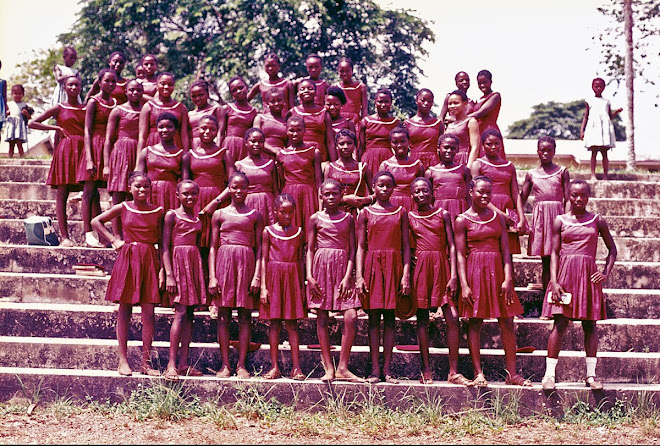.jpg)



























































































































































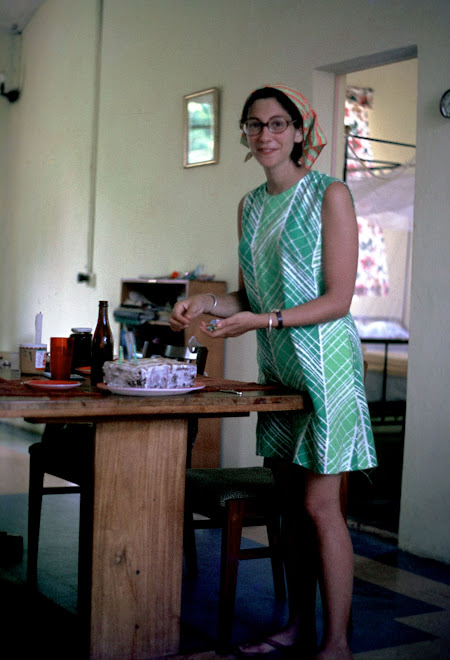
































































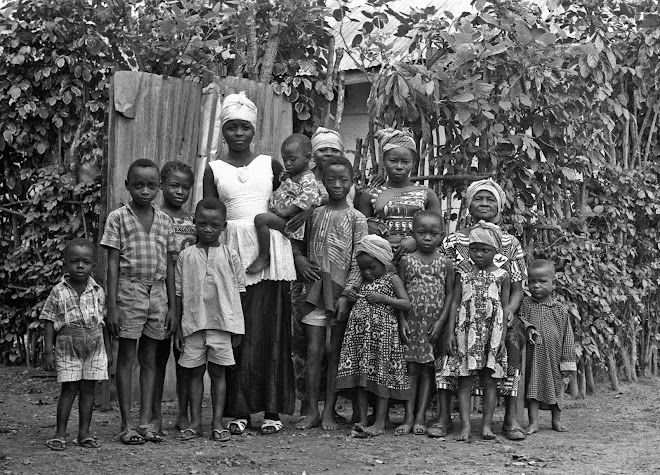.jpg)

















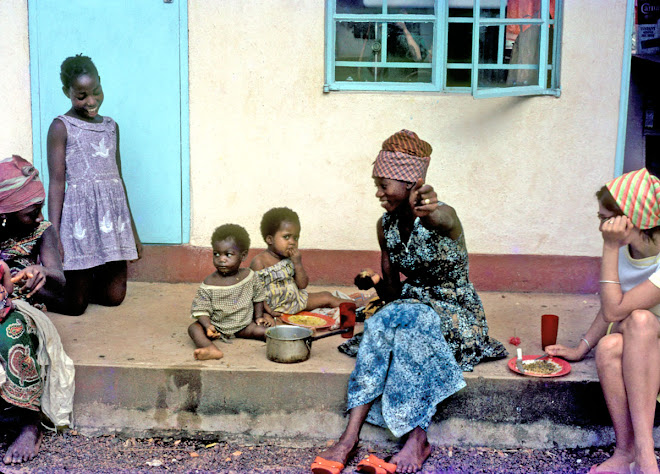



















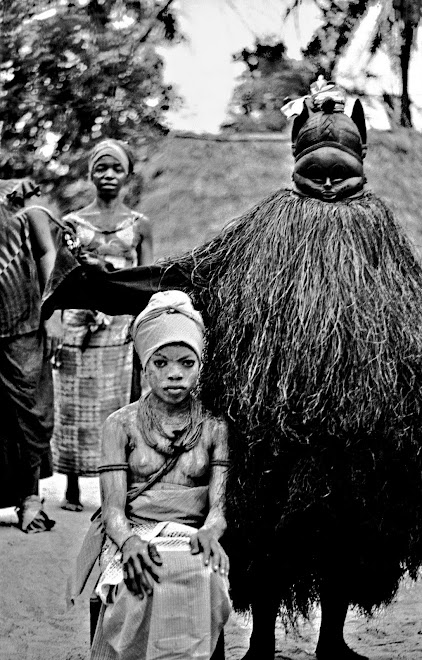-1969.jpg)

















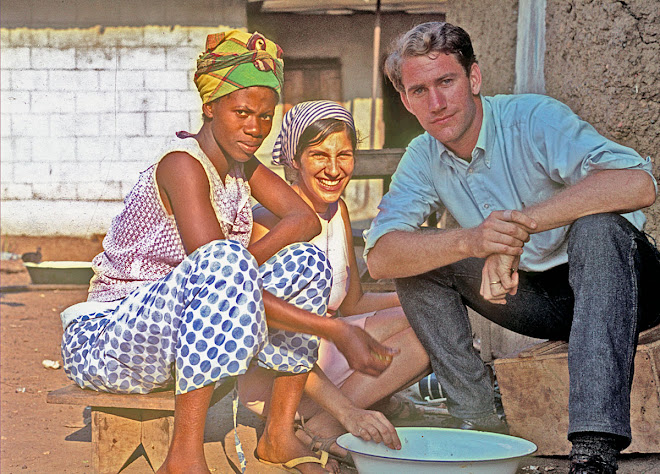













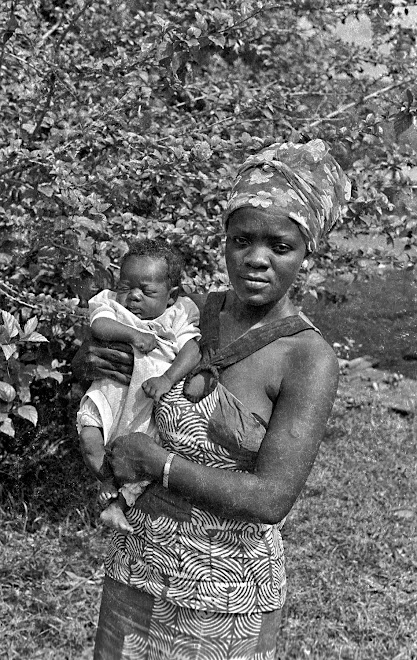-w--child.jpg)


